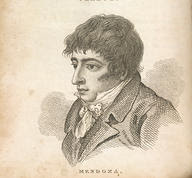The Quest for a British Infantry Rifle,
end of chapter one
So, I started my Quest for a British
Infantry Rifle and the kit to go with over two and a half years ago.
Here are the links for the first two
installments, originally published on the Gentlemanly Pursuits blog:
I did indeed receive my rifle soon
after that last posting, so just over two years ago. There was a bit
of a problem with the hardness of the frizzen and angle of the
hammer, but local gunsmith Jerry Cook fixed these in short order.
I switched from the officers' style
cartridge box to an other ranks box. I did this mostly for
conveniance, but also for more usable storage space. I am not firing
from paper cartridges, but I do carry enough ball, patch and powder
to fire 60+ rounds before restocking.
I fire a .610” round ball with a
0.015” patch and a powder charge of 80 grains of 3F. Most of the
people I shoot with shoot 40-50 caliber, so it is pretty noticeable
when the Baker goes off. We were shooting to snuff candles a couple
months back and the turbulence caused by the .610” ball sometimes
put out two candles.
So, chapter one is done. I have the
rifle and kit and am shooting regularly.
The next step I decided on was to pick
a proper uniform to wear while shooting. The obvious choice would be
60th or 95th rifles, but as much fun as the
greenjacket would be, that would be too easy.
The Chasseurs Britanniques was
originally the French Royalist army led by the Prince of Conde in the
early days of the French Revolution. By 1803 they were in British
service as the Chasseurs Britanniques and issued the famous red
coats. Evidence suggests that like some of the other emigre units in
British service (King's German Legion for one) that the Chasseurs may
have been issued Baker rifles, at least for the light company. Well,
that is where I am going. Starting at the top I have my shako with
proper insignia.
~ Chevalier


















